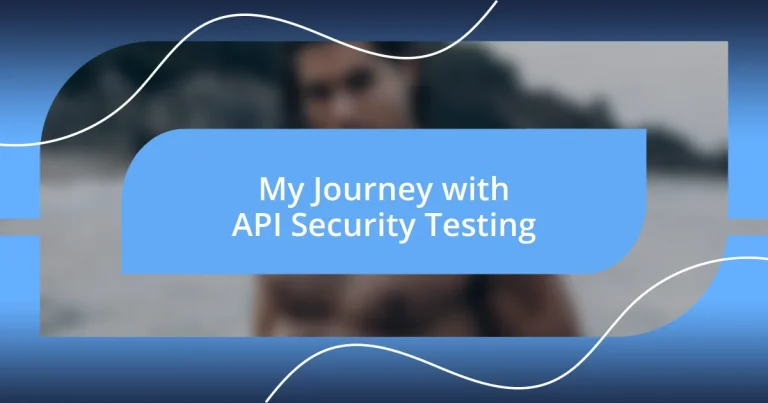Key takeaways:
- API security testing is vital for identifying vulnerabilities that traditional testing may overlook, necessitating a deep understanding of how APIs function.
- Common vulnerabilities such as Injection Attacks, Broken Authentication, and Sensitive Data Exposure pose significant risks and can lead to severe breaches if not properly tested and mitigated.
- Effective tools like Postman, Burp Suite, and OWASP ZAP enhance the API security testing process, facilitating automated testing and collaboration among stakeholders for improved security outcomes.
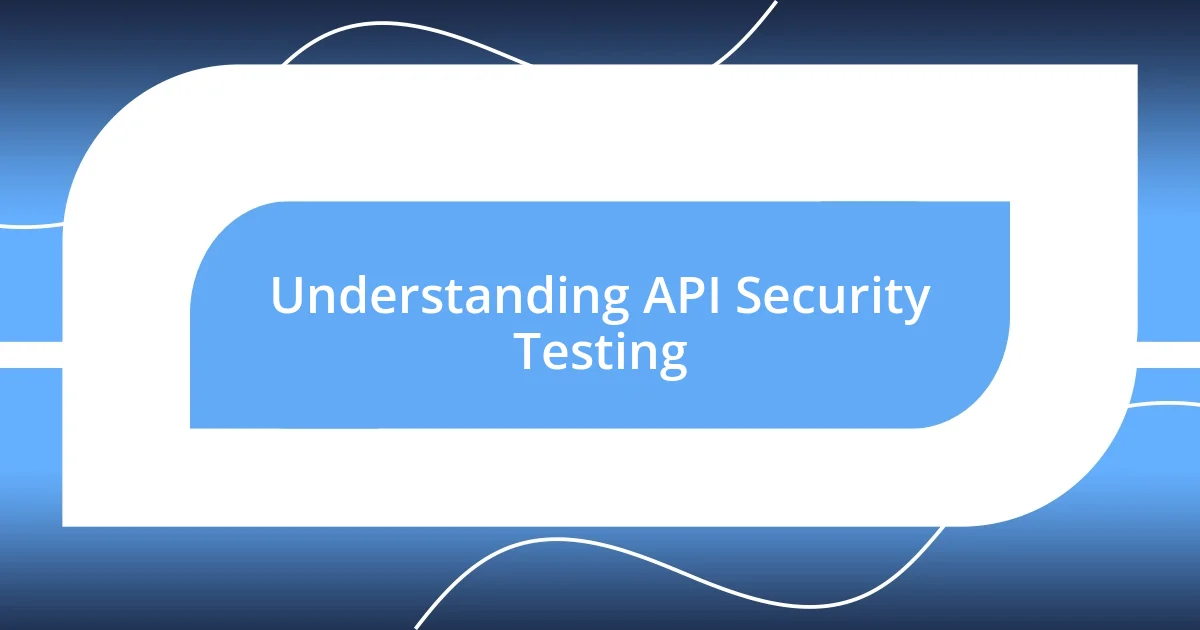
Understanding API Security Testing
API security testing is a crucial part of safeguarding applications in today’s digital landscape. The first time I delved into this field, I was surprised by how many vulnerabilities lie hidden in APIs, often overlooked by traditional testing methods. Have you ever stopped to think about how many services rely on APIs to communicate? Each one is a potential weak link.
Understanding API security testing goes beyond just identifying vulnerabilities; it involves grasping the unique ways APIs operate. For instance, I remember a project where a simple misconfiguration allowed unauthorized access to sensitive data. That moment reinforced how vital it is to assess authentication and authorization processes properly, as a breach in these areas can have catastrophic consequences.
Engaging in API security testing requires a strong familiarity with both the APIs themselves and the tools designed to test them. Personally, I found that using automated testing tools, alongside manual reviews, significantly enhanced my ability to detect issues. When I realized how much clearer the path to robust security became by analyzing deviations in expected behaviors, it prompted a lightbulb moment: API security isn’t just a checkbox on a list—it’s a continuous journey of learning and vigilance.
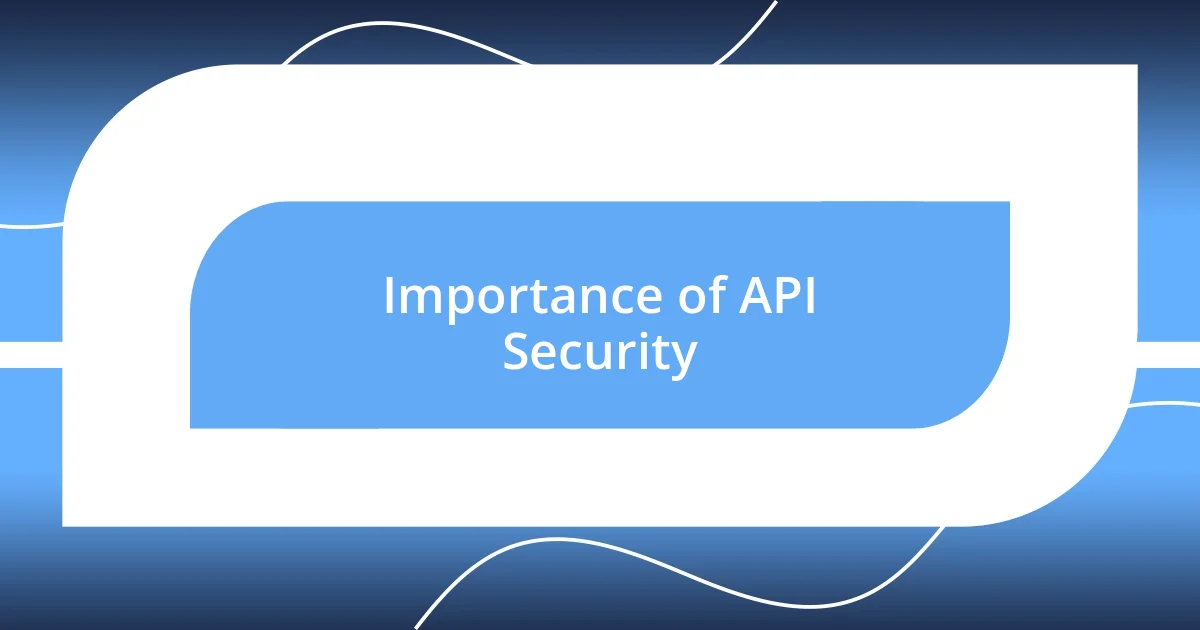
Importance of API Security
It’s easy to underestimate the importance of API security, but I’ve come to realize just how integral it is to the safety of digital applications. I recall a time when a seemingly minor oversight in an API led to significant data exposure for a client. This experience underscored for me that any vulnerability can be exploited, and once it happens, the repercussions can be severe—not just financially, but also in terms of trust and reputation.
APIs serve as gateways to valuable data and services, making them prime targets for cyberattacks. Here are several reasons why securing them is essential:
-
Sensitive Data Exposure: APIs often handle personal, financial, or proprietary information. A breach can lead to identity theft or severe financial losses.
-
Regulatory Compliance: Many industries have strict regulations regarding data protection. Failing to secure APIs can lead to legal ramifications and hefty fines.
-
Maintaining Customer Trust: If customers perceive that their data isn’t secure, they are likely to seek alternatives, damaging brand loyalty.
-
Preventing Unauthorized Access: Proper API security ensures that only authenticated users can access sensitive operations or data, significantly minimizing risk.
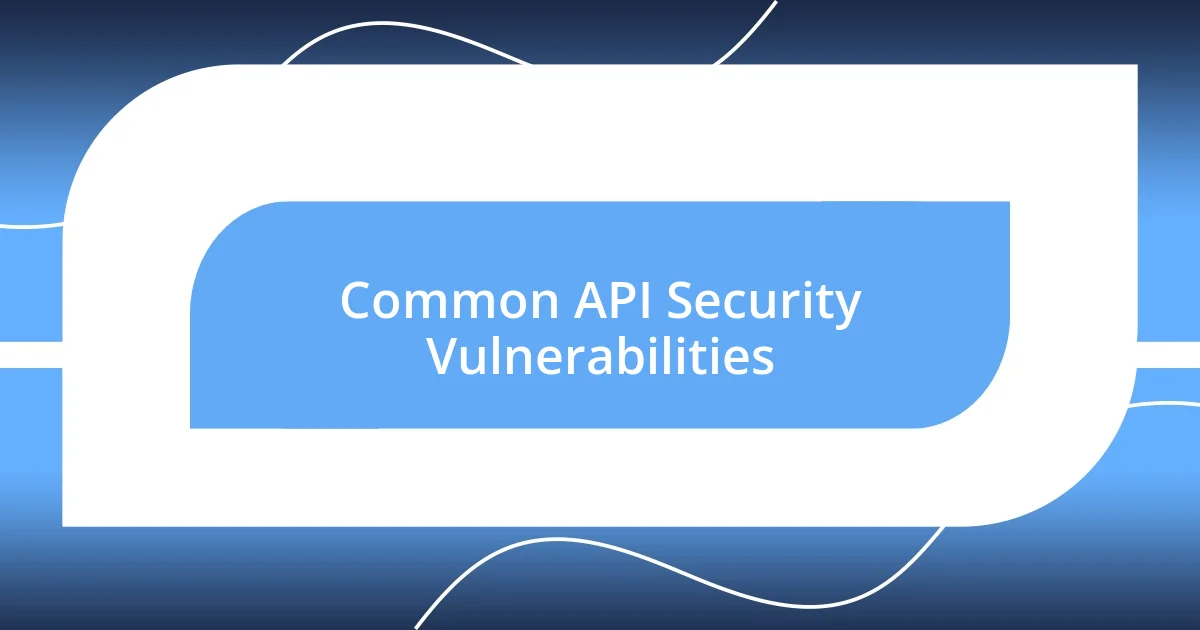
Common API Security Vulnerabilities
Common API security vulnerabilities can expose businesses to serious threats. One vulnerability I often encounter is Injection Attacks, which can lead to unauthorized data access or even full system control. I remember examining an API that lacked proper input validation, allowing attackers to manipulate queries. It was a wake-up call seeing how a seemingly harmless input could unlock the door to a payload of vulnerabilities.
Another critical issue is Broken Authentication. Over my journey, I’ve witnessed APIs that didn’t implement secure token management. This oversight can lead to session hijacking, where an attacker could impersonate legitimate users. I was involved in a project where weak session management allowed an unauthorized partner to access confidential user data, highlighting the importance of robust authentication mechanisms.
Lastly, Sensitive Data Exposure can have dire consequences. During one audit, I discovered an API sending sensitive information in plain text. It shook me to think that vital personal data was vulnerable to interception. These experiences have shaped my belief that thorough API security testing and regular vulnerability assessments are essential in safeguarding sensitive information and maintaining user trust.
| Vulnerability Type | Description |
|---|---|
| Injection Attacks | Exploitation of unvalidated input leading to unauthorized access. |
| Broken Authentication | Weak authentication mechanisms allowing session hijacking. |
| Sensitive Data Exposure | Exposing critical data through insecure transmission methods. |
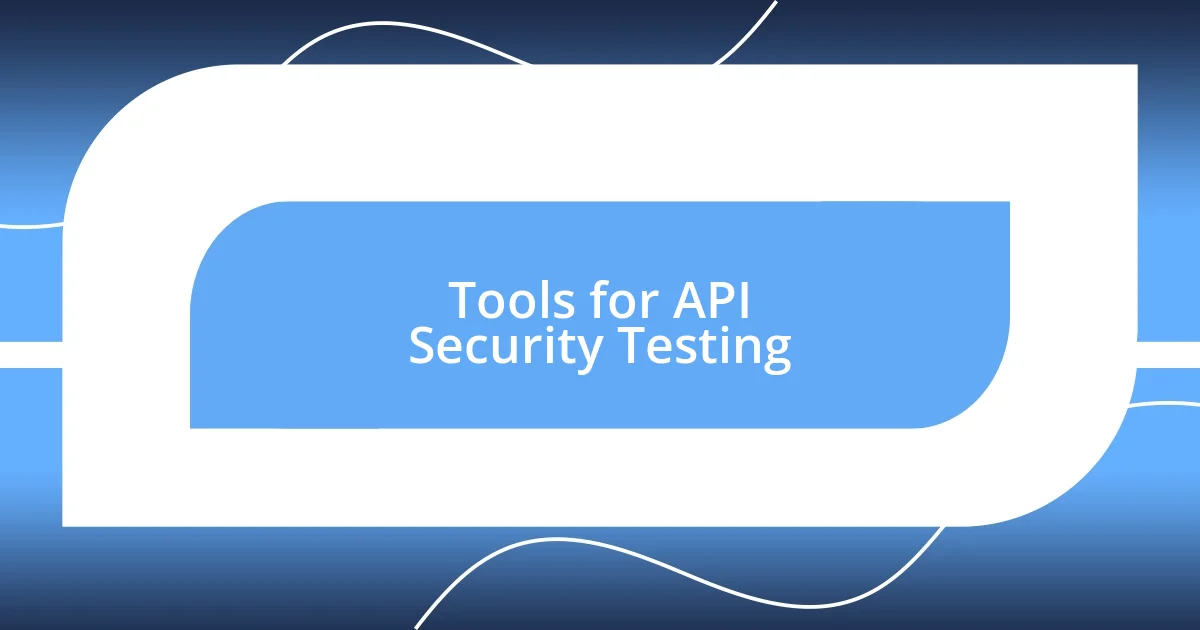
Tools for API Security Testing
When it comes to API security testing, selecting the right tools can make a world of difference. In my experience, tools like Postman and Burp Suite have been invaluable. I remember using Postman for automated testing, which allowed me to send various requests to the API effortlessly. It was amazing how a single tool could streamline the process and uncover vulnerabilities I hadn’t considered.
Another tool that stands out is OWASP ZAP (Zed Attack Proxy). I once used it during a security assessment, and the way it automated the detection of security vulnerabilities was astonishing. It felt like having a personal security consultant, guiding me through potential pitfalls while providing detailed feedback. How often have you wished for an extra set of eyes during a complex testing phase? ZAP came in handy, allowing me to focus on interpreting the results rather than getting bogged down in the mechanics.
Then there’s the significance of tools with collaborative capabilities, like APIsec. I recall a project where multiple stakeholders needed to be in the loop about security findings and remediation efforts. APIsec allowed real-time collaboration and transparency, making everyone feel involved and responsible for the API’s security. It highlighted how crucial communication is, especially when security can often feel like a solitary responsibility. Have you ever found that shared understanding truly enhances the quality of the output? In that project, it certainly did for us.












